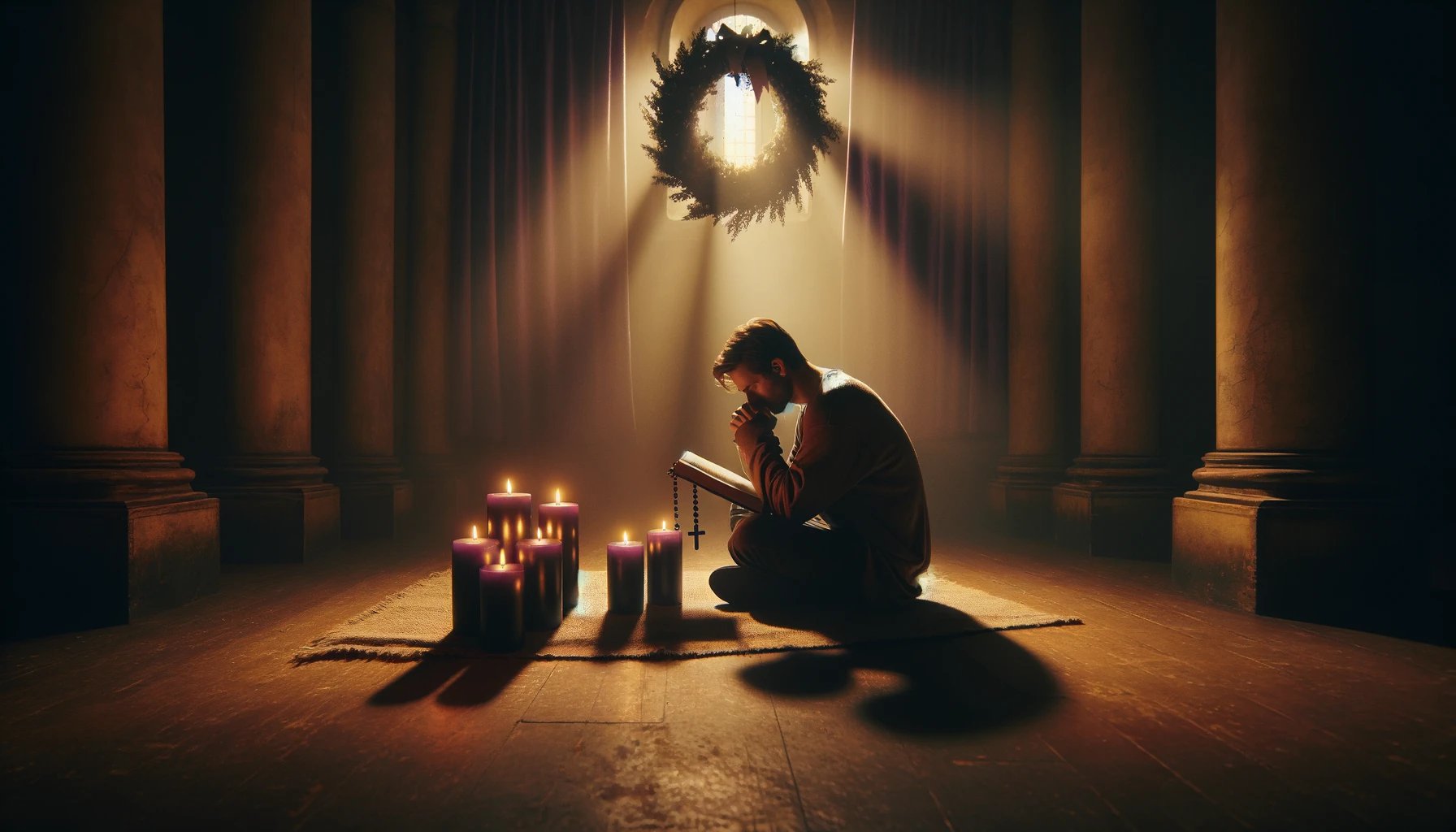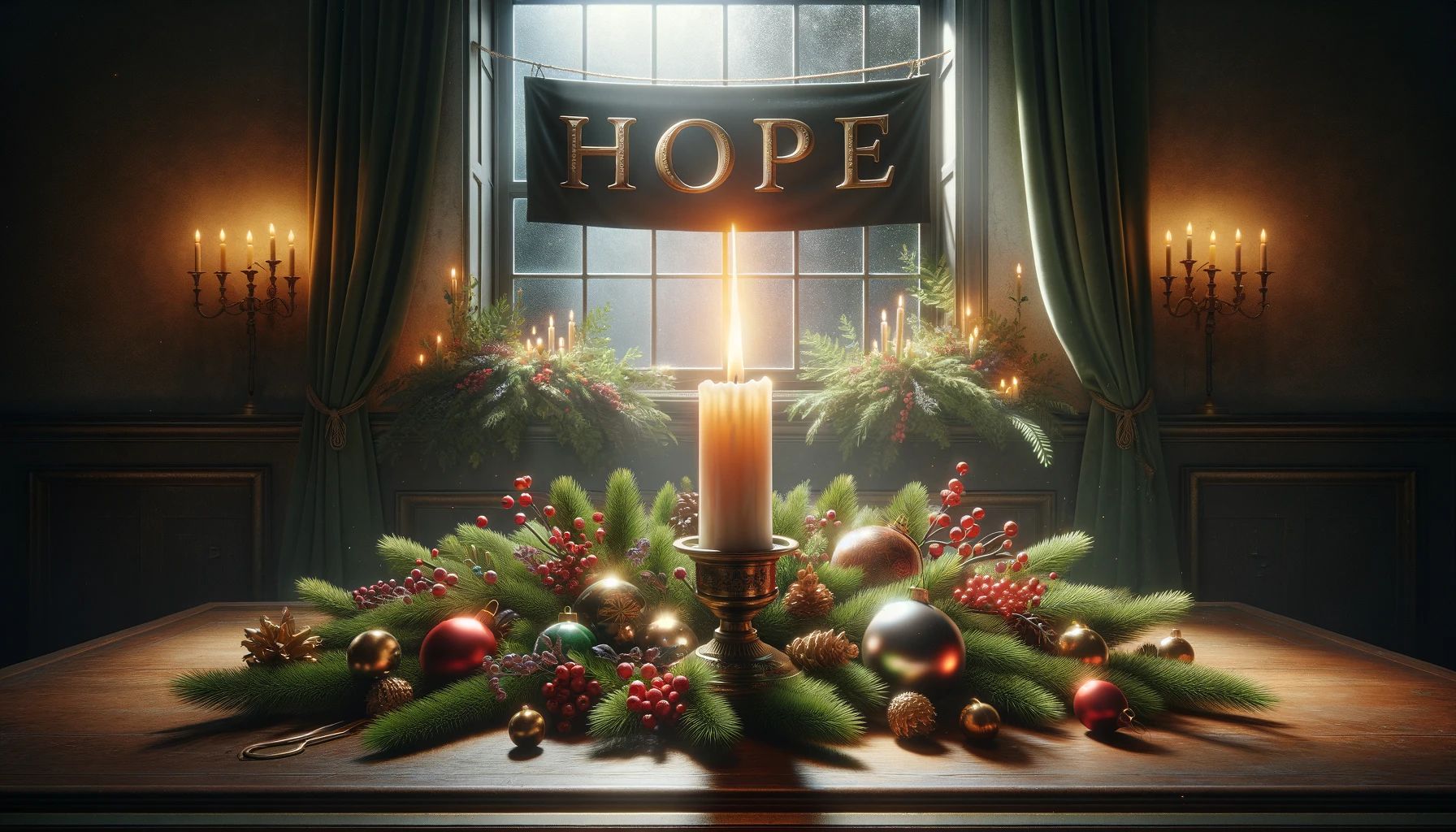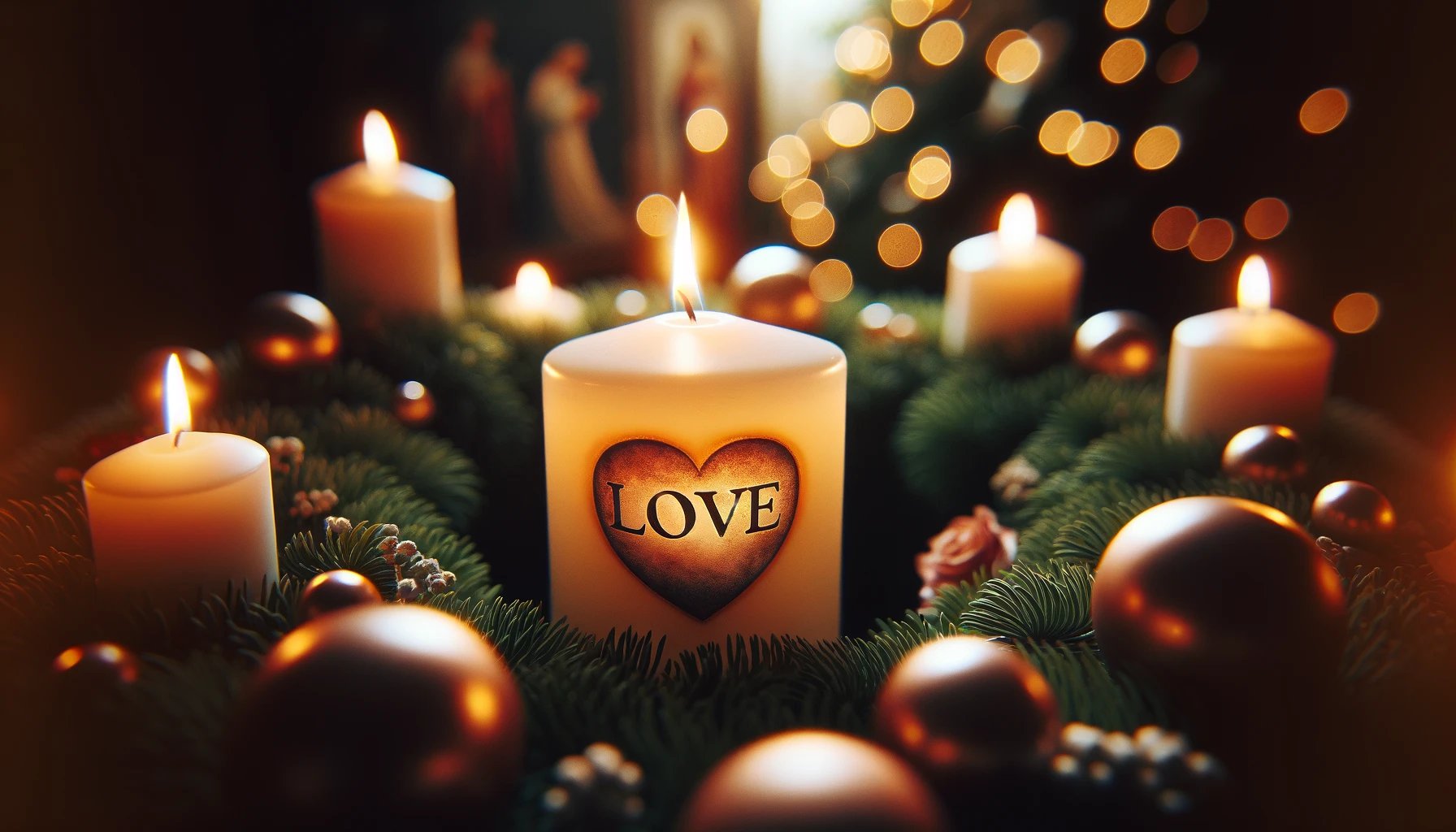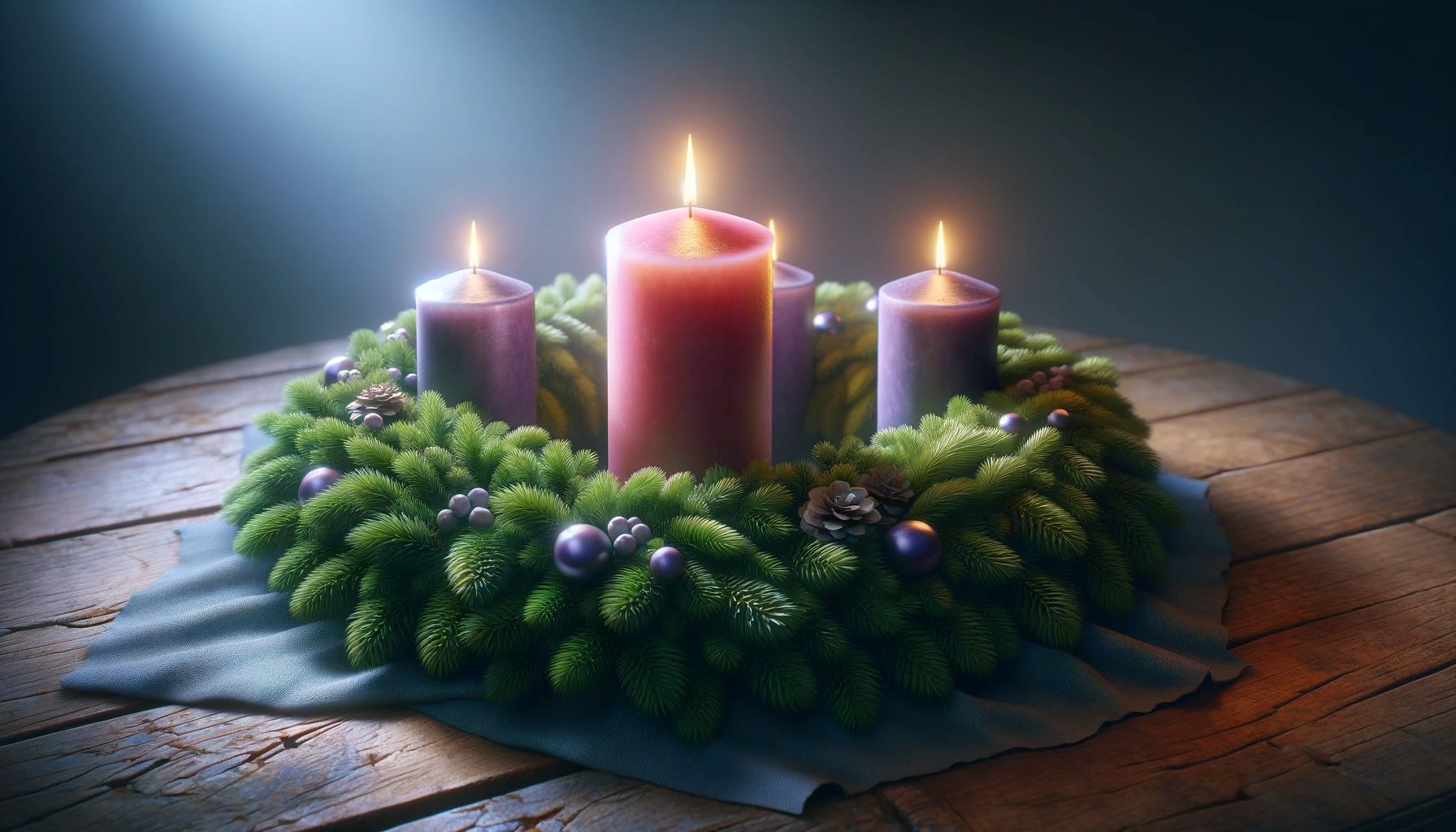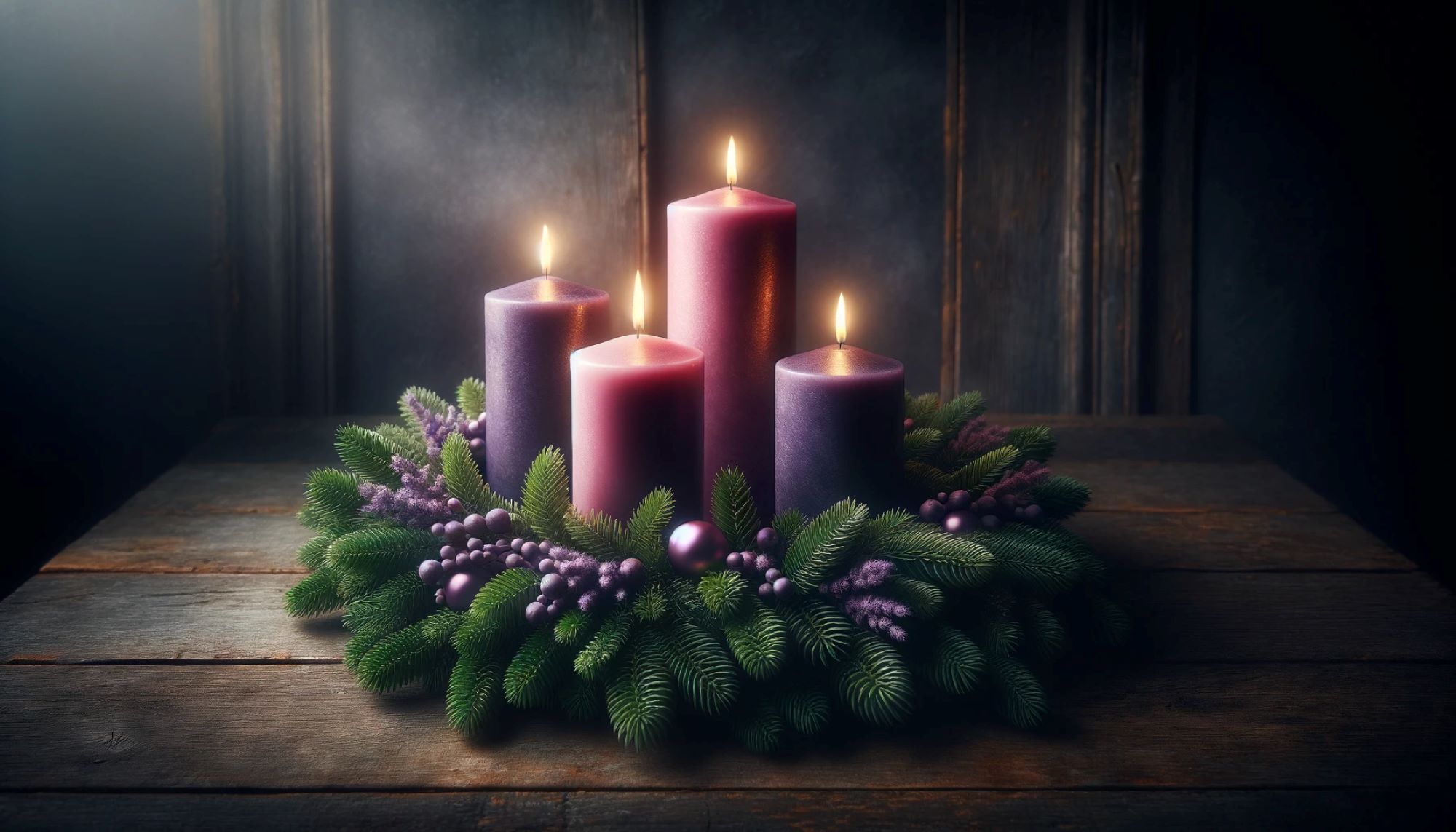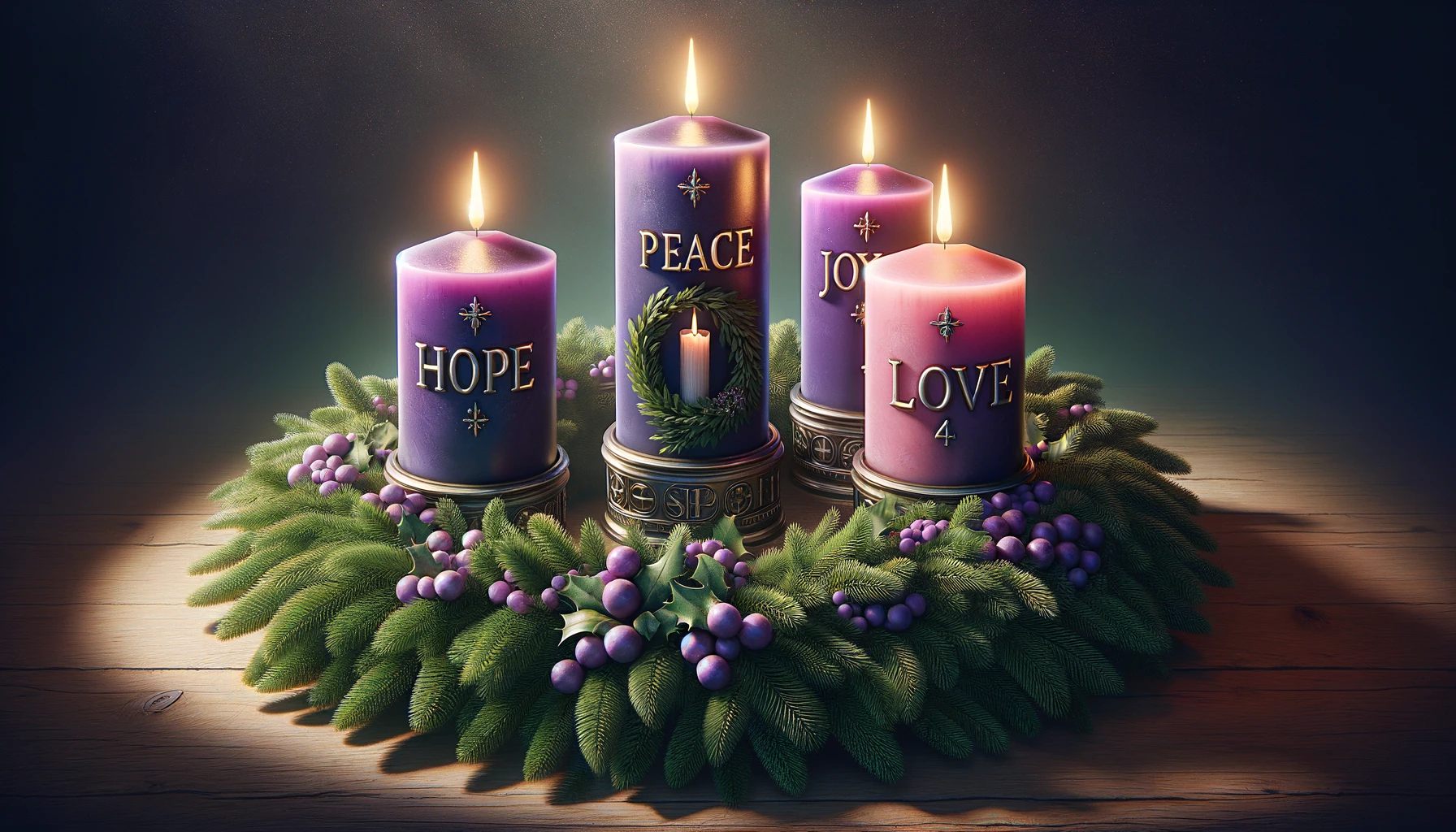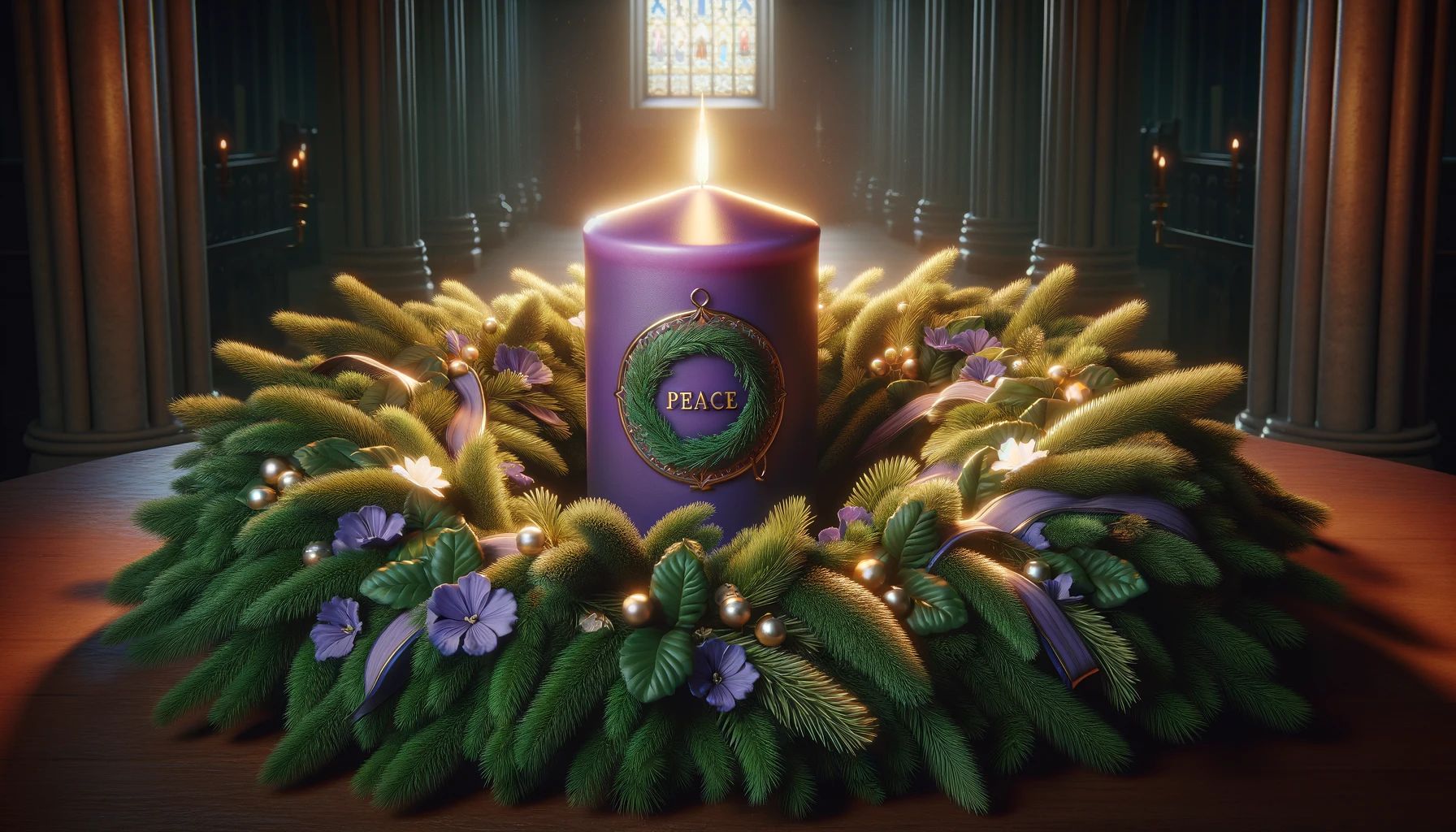Home>Special Themes>What Do The Purple Candles Mean In Advent
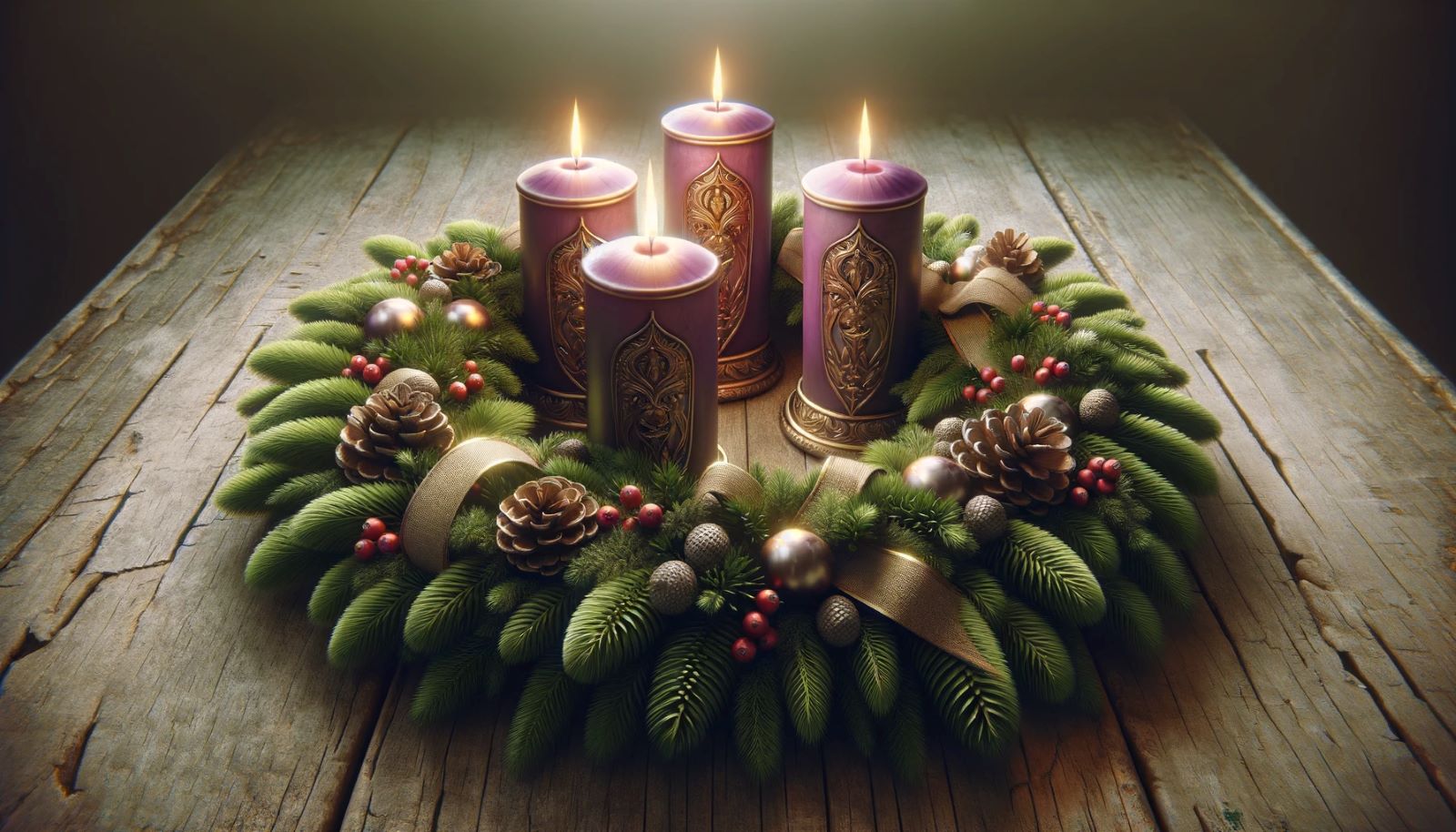

Special Themes
What Do The Purple Candles Mean In Advent
Published: February 14, 2024
Peter Smith, Editorial Director at Christian.net, combines deep insights into faith, politics, and culture to lead content creation that resonates widely. Awarded for his contributions to religious discourse, he previously headed a major organization for religious communicators, enhancing dialogue on faith's societal impacts.
Discover the significance of purple candles in Advent and explore the special themes they represent. Uncover the spiritual meaning and traditions behind these symbolic elements.
(Many of the links in this article redirect to a specific reviewed product. Your purchase of these products through affiliate links helps to generate commission for Christian.net, at no extra cost. Learn more)
Table of Contents
Introduction
Advent is a time of anticipation and preparation, marking the beginning of the liturgical year in many Christian traditions. It is a period of spiritual significance, observed with reverence and joy as believers await the celebration of the birth of Jesus Christ. Central to the observance of Advent are the symbolic candles, each representing different aspects of the spiritual journey towards Christmas.
The use of candles in religious ceremonies dates back centuries, symbolizing light in the darkness and hope in times of despair. In the context of Advent, the candles hold profound meaning, serving as a visual representation of the spiritual themes associated with this sacred season. Among the various colors used in Advent candles, purple holds a special significance, carrying deep symbolism that resonates with the essence of this holy period.
As we delve into the history, symbolism, and traditions surrounding the use of purple candles in Advent, we will uncover the rich tapestry of spiritual meanings woven into this timeless practice. From the historical roots of Advent to the profound symbolism of the purple candles, we will embark on a journey of discovery, shedding light on the profound significance of this cherished tradition.
The History of Advent
Advent, derived from the Latin word "adventus," meaning "coming" or "arrival," has a rich historical legacy that traces back to the early centuries of Christianity. The origins of Advent can be linked to the practices of fasting and penance observed by early Christians in preparation for the celebration of the birth of Jesus Christ. While the specific customs and duration of Advent varied across different regions, the central theme remained consistent – a period of spiritual reflection and anticipation leading up to the joyous commemoration of Christ's birth.
The formal establishment of Advent as a distinct liturgical season can be attributed to the Council of Tours in the 6th century. This council, convened in 567 AD, decreed that the period from late November to Christmas Day should be dedicated to fasting and prayer, setting the stage for the observance of Advent as a time of spiritual preparation. Over time, the observance of Advent evolved, incorporating elements of both penitence and joyful expectation, reflecting the dual nature of the season.
The symbolism of Advent became further defined in the Middle Ages, with the introduction of Advent wreaths and the use of candles to mark the progression of the season. The four-week duration of Advent, symbolizing the four centuries of waiting for the Messiah, became standardized, and the themes of hope, peace, joy, and love became associated with the lighting of the Advent candles.
In the 20th century, the liturgical reforms of the Second Vatican Council revitalized the observance of Advent, emphasizing its significance as a time of spiritual renewal and anticipation. Today, Advent remains a cherished season in the Christian calendar, inviting believers to engage in prayer, reflection, and acts of charity as they prepare their hearts to welcome the birth of Christ.
The historical journey of Advent reflects the enduring spiritual significance of this season, rooted in centuries of tradition and shaped by the evolving practices of the Christian faith. As we explore the symbolism and rituals of Advent, we gain a deeper appreciation for the historical tapestry that has woven this sacred period into the fabric of Christian worship.
The Symbolism of Candles in Advent
The use of candles in religious ceremonies has a profound and ancient symbolism, representing light in the darkness and hope in times of despair. In the context of Advent, the symbolism of candles holds deep spiritual significance, serving as a visual representation of the journey towards the celebration of the birth of Jesus Christ.
The Advent wreath, adorned with candles, serves as a focal point of the season's observance. Each candle on the wreath carries symbolic meaning, reflecting the spiritual themes associated with Advent. The circular shape of the wreath symbolizes eternity and the unending nature of God's love, while the evergreen foliage represents the hope of eternal life.
The lighting of the candles during the four weeks of Advent corresponds to the progressive unfolding of the season, with each candle illuminating distinct spiritual themes. The first candle, often purple, symbolizes hope and is known as the "Prophet's Candle," signifying the anticipation of the Messiah's coming. The second candle, also purple, represents peace and is called the "Bethlehem Candle," signifying the journey to the birthplace of Jesus. The third candle, typically pink or rose in color, symbolizes joy and is known as the "Shepherd's Candle," representing the joy of the shepherds upon hearing the good news of Christ's birth. The fourth candle, another purple one, signifies love and is called the "Angel's Candle," symbolizing the message of love brought by the angels.
The central white candle, often placed in the middle of the wreath, is known as the "Christ Candle." It is lit on Christmas Eve or Christmas Day, representing the light of Christ coming into the world. The lighting of the Christ Candle symbolizes the culmination of the Advent season, as believers rejoice in the fulfillment of the long-awaited promise of the Messiah's birth.
As the candles are progressively lit throughout the weeks of Advent, the increasing illumination serves as a visual representation of the growing anticipation and joy as the celebration of Christmas draws near. The symbolism of the candles in Advent encapsulates the profound spiritual journey of faith, hope, joy, and love, inviting believers to reflect on the transformative power of Christ's coming into the world.
The symbolism of candles in Advent transcends mere ritualistic observance, serving as a poignant reminder of the enduring spiritual truths that underpin the season. As we immerse ourselves in the symbolism of the Advent candles, we are beckoned to embrace the timeless message of hope, peace, joy, and love, illuminating our hearts with the radiant promise of Christ's birth.
The Meaning of Purple Candles in Advent
The use of purple candles in Advent holds profound symbolic significance, encapsulating the essence of this sacred season. Purple, historically associated with royalty and penitence, carries deep spiritual meanings that resonate with the themes of Advent. As the first and fourth candles on the Advent wreath, the purple candles symbolize hope and love, representing the anticipation of the Messiah's coming and the message of love brought by the angels.
In the context of Advent, the color purple conveys a sense of solemn expectation and preparation. It serves as a visual reminder of the penitential aspect of the season, prompting believers to engage in introspection and spiritual readiness as they await the celebration of Christ's birth. The use of purple candles in Advent underscores the dual nature of the season, intertwining elements of joyful anticipation with a call to reflection and spiritual renewal.
The first purple candle, known as the "Prophet's Candle," symbolizes hope and is lit on the first Sunday of Advent. This candle represents the anticipation of the Messiah's arrival, echoing the centuries of waiting and longing for the fulfillment of God's promise. As the flickering flame of the first purple candle illuminates the darkness, it serves as a beacon of hope, inspiring believers to embrace the promise of redemption and the dawning of a new era.
The fourth purple candle, referred to as the "Angel's Candle," signifies love and is lit on the fourth Sunday of Advent. This candle embodies the message of love brought by the angels, heralding the imminent birth of Christ. The radiant glow of the fourth purple candle embodies the profound love that permeates the Advent season, inviting believers to reflect on the transformative power of God's love manifested in the incarnation of Jesus Christ.
The use of purple candles in Advent serves as a poignant reminder of the spiritual journey towards Christmas, inviting believers to embrace the profound meanings embedded in this timeless tradition. As the gentle glow of the purple candles illuminates the Advent wreath, it kindles the flames of hope and love in the hearts of the faithful, guiding them on a path of spiritual contemplation and joyful anticipation.
The symbolism of the purple candles in Advent transcends mere ritualistic observance, inviting believers to immerse themselves in the timeless truths of faith, hope, and love. As the purple candles radiate their luminous message, they beckon believers to embrace the profound significance of Christ's coming, infusing the season with a sense of reverence, expectation, and spiritual awakening.
How Purple Candles are Used in Advent Traditions
The use of purple candles in Advent traditions is deeply rooted in the rich tapestry of Christian symbolism and ritual. As integral components of the Advent wreath, the purple candles serve as poignant emblems of hope, anticipation, and spiritual preparation as believers embark on the journey towards the celebration of Christ's birth.
The lighting of the purple candles during the Advent season is a cherished tradition that carries profound spiritual significance. On the first Sunday of Advent, the initial purple candle, known as the "Prophet's Candle," is ceremoniously lit, marking the commencement of the season. This act symbolizes the dawn of hope, echoing the anticipation of the Messiah's arrival and the promise of redemption. As the flickering flame of the first purple candle casts its gentle glow, it serves as a beacon of hope, inspiring believers to embrace the promise of a new beginning and the fulfillment of divine prophecy.
Throughout the subsequent weeks of Advent, the lighting of the purple candles continues to unfold, each flame radiating its unique symbolism. On the fourth Sunday of Advent, the final purple candle, referred to as the "Angel's Candle," is kindled, symbolizing the message of love brought by the angels and heralding the imminent birth of Christ. The radiant glow of the fourth purple candle embodies the profound love that permeates the Advent season, inviting believers to reflect on the transformative power of God's love manifested in the incarnation of Jesus Christ.
As believers gather in congregations, homes, and places of worship, the ritual of lighting the purple candles fosters a sense of communal reverence and spiritual unity. The act of lighting the candles, accompanied by prayers, hymns, and reflections, becomes a poignant expression of faith and anticipation, fostering a collective journey of spiritual contemplation and joyful expectation.
The use of purple candles in Advent traditions transcends mere symbolism, serving as a tangible embodiment of the spiritual themes that define the season. As the gentle glow of the purple candles illuminates the Advent wreath, it kindles the flames of hope and love in the hearts of the faithful, guiding them on a path of spiritual contemplation and joyful anticipation.
In essence, the use of purple candles in Advent traditions encapsulates the timeless message of faith, hope, and love, inviting believers to immerse themselves in the profound meanings embedded in this cherished tradition. As the purple candles radiate their luminous message, they beckon believers to embrace the profound significance of Christ's coming, infusing the season with a sense of reverence, expectation, and spiritual awakening.
Read more: Why Pink And Purple Candles At Advent
Conclusion
In conclusion, the symbolism and usage of purple candles in Advent encapsulate the profound spiritual journey of anticipation, hope, and love as believers prepare to celebrate the birth of Jesus Christ. The historical roots of Advent, dating back to the early centuries of Christianity, have shaped a season of spiritual significance, inviting believers to engage in prayer, reflection, and acts of charity as they await the joyous commemoration of Christ's birth.
The symbolism of the purple candles, representing hope and love, intertwines elements of joyful anticipation with a call to reflection and spiritual renewal. As the flickering flames of the purple candles illuminate the darkness, they serve as beacons of hope and love, inspiring believers to embrace the promise of redemption and the transformative power of God's love manifested in the incarnation of Jesus Christ.
Throughout the weeks of Advent, the ritual of lighting the purple candles fosters a sense of communal reverence and spiritual unity. The act of kindling the candles, accompanied by prayers, hymns, and reflections, becomes a poignant expression of faith and anticipation, fostering a collective journey of spiritual contemplation and joyful expectation.
The use of purple candles in Advent traditions transcends mere symbolism, serving as a tangible embodiment of the spiritual themes that define the season. As the gentle glow of the purple candles illuminates the Advent wreath, it kindles the flames of hope and love in the hearts of the faithful, guiding them on a path of spiritual contemplation and joyful anticipation.
In essence, the symbolism and usage of purple candles in Advent invite believers to immerse themselves in the profound meanings embedded in this cherished tradition. As the purple candles radiate their luminous message, they beckon believers to embrace the profound significance of Christ's coming, infusing the season with a sense of reverence, expectation, and spiritual awakening.
The enduring symbolism of the purple candles in Advent serves as a poignant reminder of the timeless truths of faith, hope, and love, inviting believers to embrace the profound meanings embedded in this cherished tradition. As the Advent season unfolds, the gentle glow of the purple candles continues to illuminate the hearts of the faithful, guiding them on a transformative journey of spiritual contemplation and joyful anticipation.
